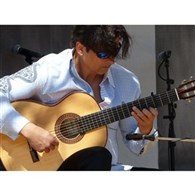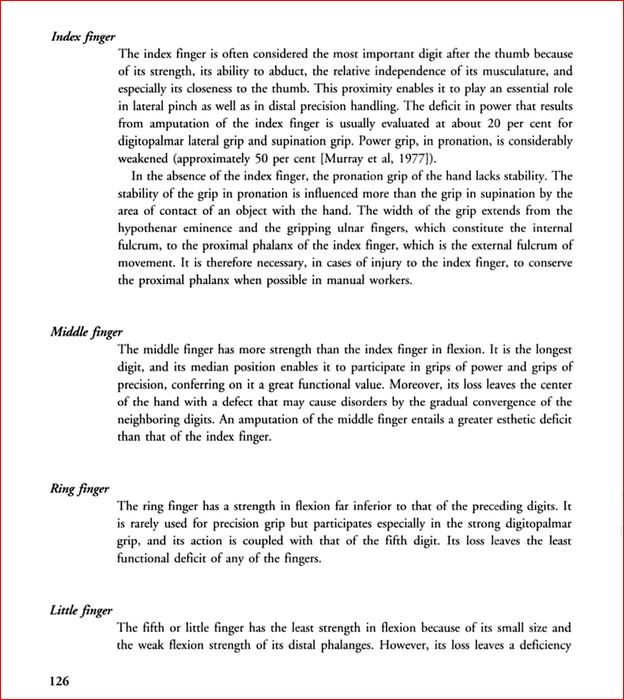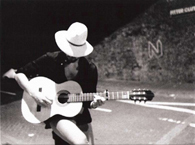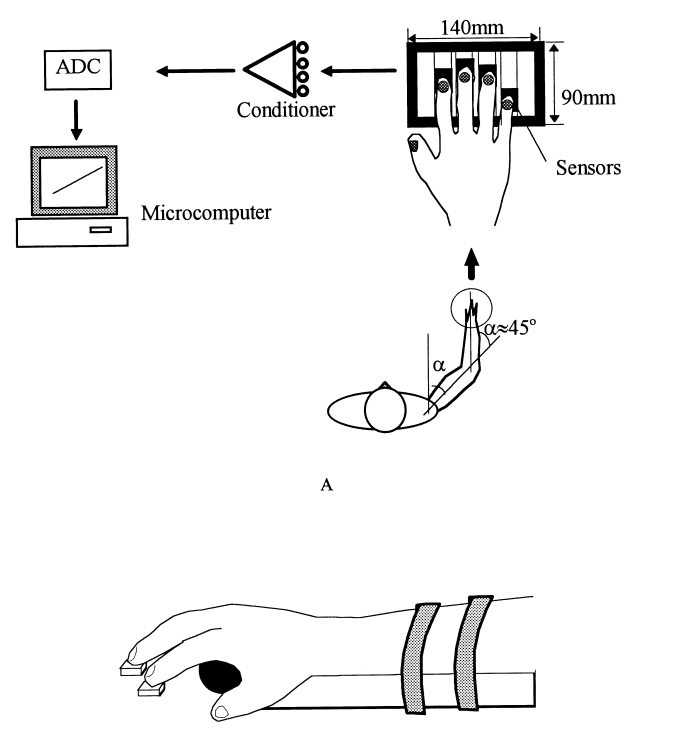Welcome to one of the most active flamenco sites on the Internet. Guests can read most posts but if you want to participate click here to register.
This site is dedicated to the memory of Paco de Lucía, Ron Mitchell, Guy Williams, Linda Elvira, Philip John Lee, Craig Eros, Ben Woods, David Serva and Tom Blackshear who went ahead of us.
We receive 12,200 visitors a month from 200 countries and 1.7 million page impressions a year. To advertise on this site please contact us.
|

|
|
Picado-cross early or late?
|
You are logged in as Guest
|
|
Users viewing this topic: none
|
|
Login  | |
|

   
kitarist
Posts: 1715
Joined: Dec. 4 2012

|
 RE: Picado-cross early or late? (in reply to Miguel de Maria) RE: Picado-cross early or late? (in reply to Miguel de Maria)
|
|
|
quote:
ORIGINAL: Miguel de Maria
Yeah, a picado post!
Most scale runs have an awkward crossing, where i has to reach up or m has to reach down. It usually tends to be the hardest part of the run for that reason. By varying whether you start on i or m, that crossing will be in a different place. How do you choose where to put it?
I seem to like to finger the crossing late, but I wonder if that's such a good idea. Yes, you get the speed and rhythm going fast, but you also leave the hardest part at the end, where you might not be paying as much attention.
Anyone have any insights into how the best guitarists do this?
I am sure the regulars will give you a much more comprehensive (and informed?) reply, but FWIW, after experimenting this way and that way, I came to the conclusion that I just have to strive to learn to cross any which way it comes and not try to adjust in general (maybe in special cases when flipping the starting point results in all crossings becoming "nice").
I realize this is maybe a frustrating advice, but I'd say try to practice awkward crossings to the point where they don't seem a big deal anymore.
As to timing - I don't know. When you practice an awkward crossing by itself it comes "early" in the scale run (since it is the only thing you are practicing). So you are probably encountering it both early and late and thus getting experience with both.
More generally, it seems like maybe a bit too much is made out of the instances when a fingertip-string setup deviates from the "ideal". It is not really mentioned much for tremolo, for example(*), even though both "i" and "a" there have deviated from their usual setup due to "ami" being on one string. I think it helps to strive for finger control to the point of being able to execute naturally on the string, the one "in front"(down), and the one "behind"(up).
(*) Single-string picado is actually another example - either "i" or "m" or likely both have had to adjust in their approach to the string a bit in order to be able to execute on a single string. The angle and setup of each fingertip with respect to the string is slightly different than the "canonical" or ideal one.
_____________________________
Konstantin
|
|
|
|
REPORT THIS POST AS INAPPROPRIATE |
Date Oct. 18 2017 17:02:47
 |
|

  
Piwin
Posts: 3559
Joined: Feb. 9 2016

|
 RE: Picado-cross early or late? (in reply to kitarist) RE: Picado-cross early or late? (in reply to kitarist)
|
|
|
+1 on the "frustrating advice". 
To me the technical challenge those things pose is the same wherever it occurs. The finger I start with really just depends on what comes next (so which finger I want to end with).
But tbh the question seems kind of strange to me. I mean, it sounds like you're just accepting that these crossings will somehow **** up your picado run and you want to decide whether it's better to screw up at the beginning or at the end. I mean if you know you're gonna screw up, screw up at the end. Less notes out of whack. But maybe it's better to be in a position where you don't screw up at all?
I'll take a shot in the dark and say this: maybe you're playing these runs too fast? If you're comfortable playing picado without any of these crossings at X bpm but you're only comfortable with these crossings at, say, X minus 40 bpm, then you should be playing at X minus 40 bpm, not faster. I mean, it's like learning a full piece but there's this one really hard passage in it. Doesn't matter if you've got all the rest perfectly down and it doesn't matter if that passage is at the beginning or at the end, if you can't play that one passage up to speed, then you have to slow the whole thing down, even the parts that you could play faster.
_____________________________
"Anything you do can be fixed. What you cannot fix is the perfection of a blank page. What you cannot fix is that pristine, unsullied whiteness of a screen or a page with nothing on it—because there’s nothing there to fix."
|
|
|
|
REPORT THIS POST AS INAPPROPRIATE |
Date Oct. 18 2017 18:54:13
 |
|

   
Ricardo
Posts: 14799
Joined: Dec. 14 2004
From: Washington DC

|
 RE: Picado-cross early or late? (in reply to kitarist) RE: Picado-cross early or late? (in reply to kitarist)
|
|
|
quote:
ORIGINAL: kitarist
quote:
ORIGINAL: mark indigo
quote:
I just meant to say that as guitarists what we start from as untrained persons is not relevant anymore as we developed and modified all these characteristics into something different.
what? once you become a guitarist anatomy doesn't count anymore?
It certainly counts - which is why it is silly when people (say in classical guitar land) always try to come up with the One Specific Recipe of how to set up and move you fingers to play guitar. So I'd say I am in full agreement with you when you say this below: "as we progress we ignore anatomy and physiology at our peril. Think of Schumann damaging his hands, and Viejín too... not to mention numerous cases of rsi, tendonitis, carpel tunnel, focal dystonia etc.".
Since clearly whatever point I was trying to make in a specific context here is totally getting lost, I will delete the offending comment.
In regards to i finger being fast and m finger being strong, I would say the jist of it is that since birth we already have "trained" our fingers to do certain tasks. The i m discrepancy is probably due to normal tendancies of this rather than the physical "clean slate" so to speak. Therefore the main idea stands that we must "retrain" our fingers to do special skills such as typing or playing an instrument, so the previous state of our fingers becomes moot. I must admit however that the speed vs strength results of the test seem extremely questionable to my scientific mind. What does seem relevant however, is a "right left" issue of dominance which might manifest in either finger. I often equate i m picado with a totally different mechanic, down vs up picking strokes, with very good results.
_____________________________
CD's and transcriptions available here:
www.ricardomarlow.com
|
|
|
|
REPORT THIS POST AS INAPPROPRIATE |
Date Oct. 23 2017 11:19:58
 |
|

   
mark indigo
Posts: 3625
Joined: Dec. 5 2007

|
 RE: Picado-cross early or late? (in reply to Ricardo) RE: Picado-cross early or late? (in reply to Ricardo)
|
|
|
quote:
In regards to i finger being fast and m finger being strong, I would say the jist of it is that since birth we already have "trained" our fingers to do certain tasks. The i m discrepancy is probably due to normal tendancies of this rather than the physical "clean slate" so to speak. You think when we are born the i and m fingers are the same and we develop them differently through normal activity, play, school, sport etc.?
My understanding of the anatomy and physiology is first that the i finger has a greater "range of movement" and the m finger has more "grip strength".
I think the range of movement of i gives it greater potential for speed and accuracy.
I don't know how much of that we are born with and how much we develop, I would guess probably both.
quote:
Therefore the main idea stands that we must "retrain" our fingers to do special skills such as typing or playing an instrument, so the previous state of our fingers becomes moot. Sure we do, big time! Not least evening out the differences in the i and m fingers! But we have a starting point for learning those skills, we have the physical hardware of our anatomy for developing those skills, and we have the potentials and limits of that anatomy to work with.
Not everyone needs to learn anatomy in order to play the guitar, though some of us have found it necessary in overcoming certain problems. Equally Learning to play the guitar doesn't make anatomy irrelevant.
quote:
I must admit however that the speed vs strength results of the test seem extremely questionable to my scientific mind. you lost me there, what test was that?
_____________________________
|
|
|
|
REPORT THIS POST AS INAPPROPRIATE |
Date Oct. 23 2017 14:51:52
 |
|

   
mark indigo
Posts: 3625
Joined: Dec. 5 2007

|
 RE: Picado-cross early or late? (in reply to Ricardo) RE: Picado-cross early or late? (in reply to Ricardo)
|
|
|
quote:
Any and every test that might have resulted in the conclusion that generally people's index finger develops or has speed/mobility vs the middle finger that supposedly develops or has more strength. Basically, any test that might support your questionable claims. It would be interesting to read a summary of how the conclusion was reached if it indeed has been by the science and medical community.
Raoul Tubiana (d.2013) was a hand specialist and hand surgeon. He wrote a bunch of stuff on the hand including "Examination of the Hand and Wrist", "Medical Problems of the Instrumentalist Musician", "An Atlas of Surgical Techniques of the Hand and Wrist" etc.
I would love to read some of this stuff first hand but it's quite expensive.
Tubiana's "The Hand, Vol. 1" and "Functional Anatomy of the Hand" are both quoted in Christopher Berg's "Mastering Guitar Technique: Process and Essence".
Also quoted in Berg's book is Frank R. Wilson, "The Hand".
I only have the Berg book and the Wilson book (and some general anatomy stuff like Grants and McMinns).
Pages 3-24 of the Berg book I found particularly interesting and useful. He references Tubiana extensively.
A few relevant passages:
The Fingers
The abilities and limits of individual fingers and their joints need to be clearly understood to take full advantage of proper use. Fingers do not function identically. Further, the knuckle, middle and tip joints are not of identical construction.
...
The Index Finger
The flexors and extensors of the index finger are, in most cases, independent. This independence in both flexion and extension accounts for the heavy use this finer gets in right hand technique.
...the index finger has less flexion at the knuckle joint than the other fingers, because it opposes the thumb. Guitarists should not force the follow-through of this finger to make it "look like" the others..
...
The index finger also has independence in abduction and adduction (the ability to move from side to side).
...
The Middle Finger
This finger has limited independence in both flexion and extension, primarily from its dependence on the ring finger for comfortable movement (a result of the quadrige effect). This dependence can be reduced in an i-m alternation by training the ring and middle finger to move freely with m. The middle finger does have more strength in flexion than the index finger. This may be why some guitarists prefer to play scales with m-i as opposed to i-m.
_____________________________
|
|
|
|
REPORT THIS POST AS INAPPROPRIATE |
Date Oct. 24 2017 12:01:50
 |
|

   
Ricardo
Posts: 14799
Joined: Dec. 14 2004
From: Washington DC

|
 RE: Picado-cross early or late? (in reply to kitarist) RE: Picado-cross early or late? (in reply to kitarist)
|
|
|
quote:
Also, what's with this guy; seems obsessed with finger amputation
Well actually, now we have a context for the claim in question, and it seems that WAS the experiment...and a guy named Murray from 70's is cited, but it looks like it's about power grip strength, and each finger's contribution based on a percentage, derived from the amputated digits. We only get a figure for the index, (20-50%), and flexion strength is coupled with finger SIZE, so of course Middle is strongest by default (no data or source for this conclusion), and most importantly, a missing ring finger is least significant. (!!!!!). Hardly a useful section for equating physical hand characteristics to guitar playing! IMO of course.
_____________________________
CD's and transcriptions available here:
www.ricardomarlow.com
|
|
|
|
REPORT THIS POST AS INAPPROPRIATE |
Date Oct. 25 2017 12:49:31
 |
|
 New Messages New Messages |
 No New Messages No New Messages |
 Hot Topic w/ New Messages Hot Topic w/ New Messages |
 Hot Topic w/o New Messages Hot Topic w/o New Messages |
 Locked w/ New Messages Locked w/ New Messages |
 Locked w/o New Messages Locked w/o New Messages |
|
 Post New Thread
Post New Thread
 Reply to Message
Reply to Message
 Post New Poll
Post New Poll
 Submit Vote
Submit Vote
 Delete My Own Post
Delete My Own Post
 Delete My Own Thread
Delete My Own Thread
 Rate Posts
Rate Posts
|
|
|
Forum Software powered by ASP Playground Advanced Edition 2.0.5
Copyright © 2000 - 2003 ASPPlayground.NET |
0.09375 secs.
|


 Printable Version
Printable Version


















 New Messages
New Messages No New Messages
No New Messages Hot Topic w/ New Messages
Hot Topic w/ New Messages Hot Topic w/o New Messages
Hot Topic w/o New Messages Locked w/ New Messages
Locked w/ New Messages Locked w/o New Messages
Locked w/o New Messages Post New Thread
Post New Thread